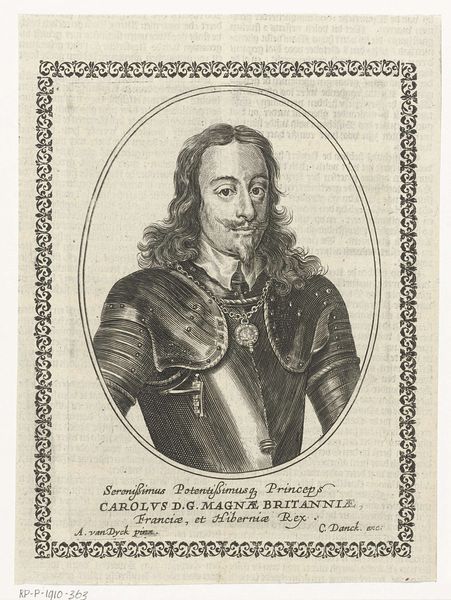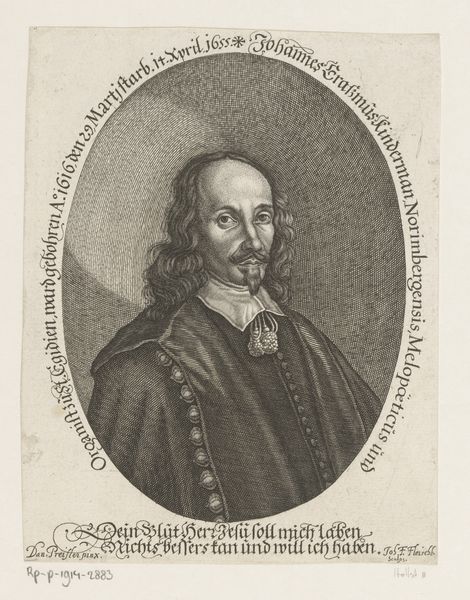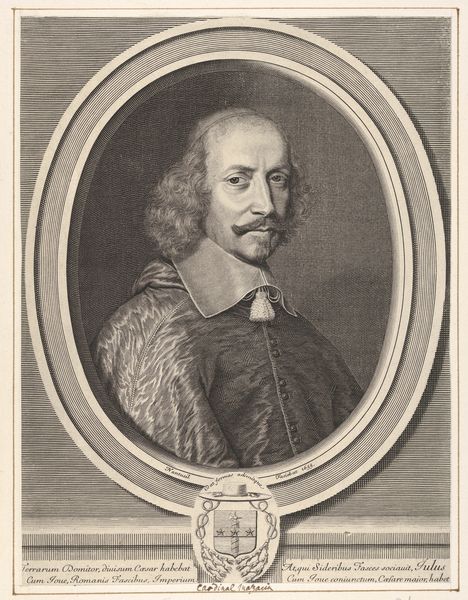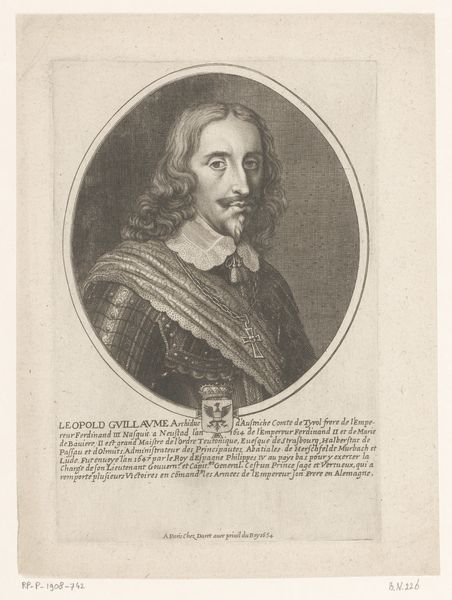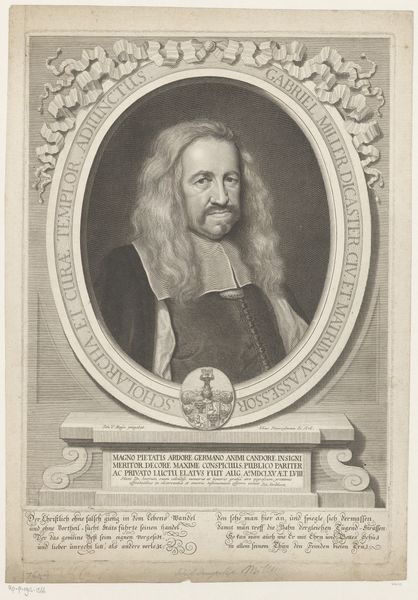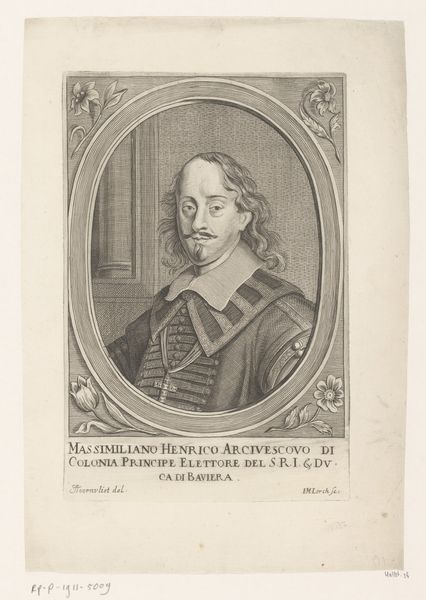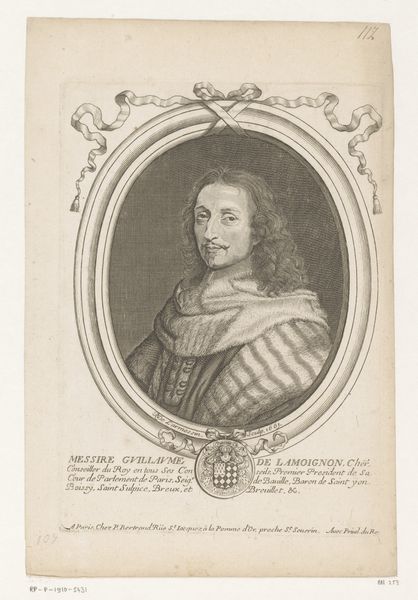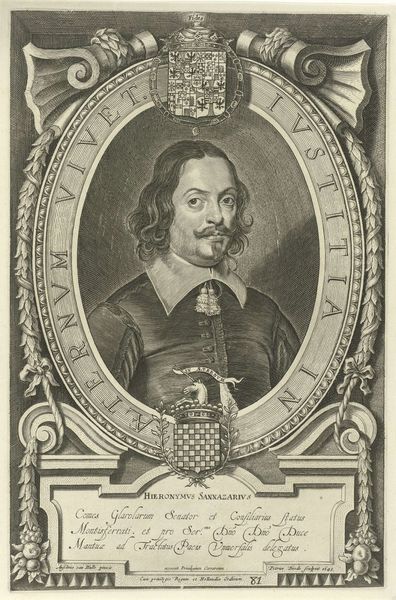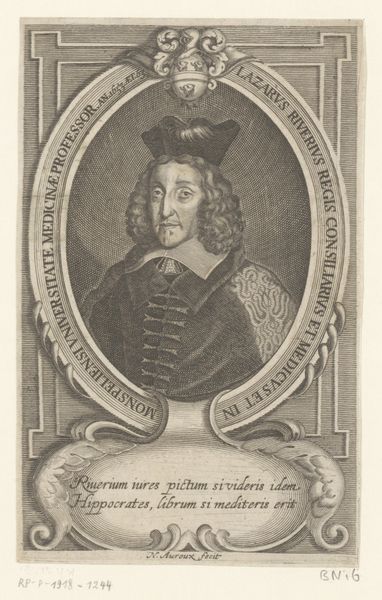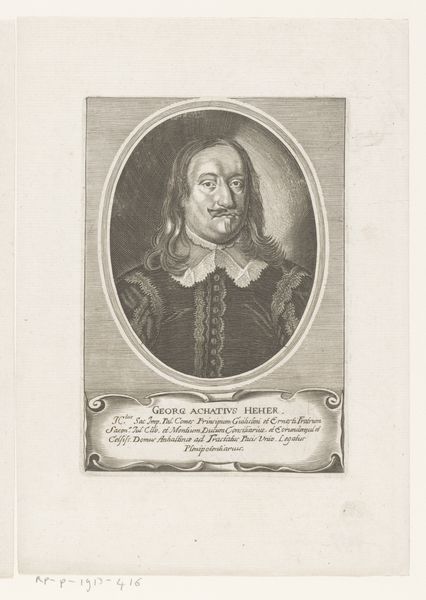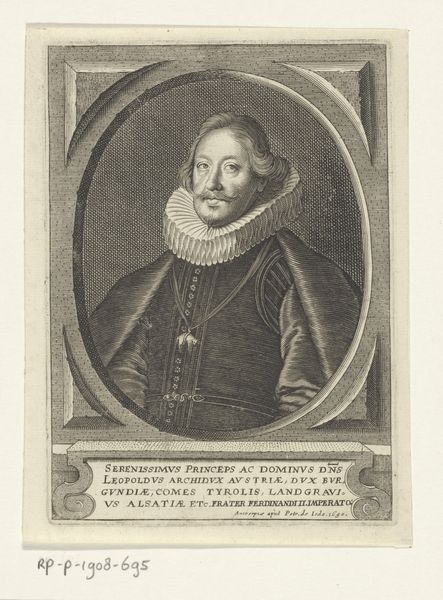
engraving
#
portrait
#
baroque
#
old engraving style
#
figuration
#
line
#
northern-renaissance
#
academic-art
#
engraving
Dimensions: height 175 mm, width 128 mm
Copyright: Rijks Museum: Open Domain
Curator: Looking at this print, "Portret van Chrysostomus Cöler," created in 1652 by Matthäus Merian, it immediately strikes me as a product deeply embedded within its historical and social framework. It presents a man, likely of considerable status, captured during a time of significant political and religious upheaval in Europe. Editor: My initial impression is of the crispness of the line work. The contrast between the precise detailing of the face and clothing against the smoother background oval draws the eye. It's a very controlled and deliberate use of the engraving medium. Curator: Absolutely. Considering Cöler was a lawyer and diplomat representing Brunswick-Lüneburg, the formal presentation serves to emphasize his role as a negotiator during a period marked by conflicts like the Thirty Years’ War. The inscription below acts as an important contextual anchor. Editor: The portrait’s power resides in the intricate detail achieved through line engraving. The way Merian suggests depth and texture—notice the lace collar and the cascading curls—is quite remarkable. It's an excellent demonstration of baroque aesthetics, meticulously rendered in print. Curator: And it is important to remember the social context of portraiture during this era. A work like this reinforced existing power dynamics, celebrating and immortalizing individuals within the ruling class. Portraits like this one not only shaped perceptions but also perpetuated the prevailing sociopolitical order. Editor: While that is clear, the aesthetic decisions create an impact. The oval framing isolates Cöler, highlighting his individuality even as it places him within established conventions of portraiture. Semiotically, it creates a strong focal point. Curator: Reflecting on it, the artwork functions as a powerful marker of status and an embodiment of the negotiation between individual identity and societal expectations in the 17th century. Editor: I concur that appreciating Merian's technical prowess—particularly regarding line and form—and his commitment to baroque and renaissance visual norms offers compelling insights, indeed.
Comments
No comments
Be the first to comment and join the conversation on the ultimate creative platform.

